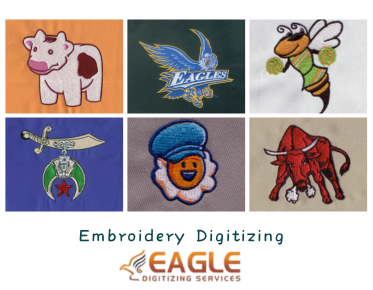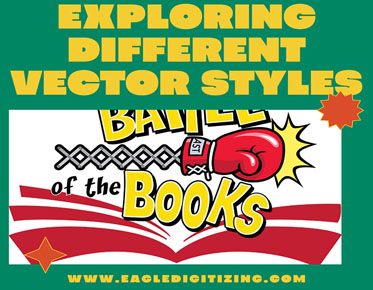Shedding Light on Screen Printing: Choosing the Best Light Sources for Optimal Results
In the world of screen printing, light is an essential element that can make or break your final product. Whether you're a seasoned screen printer or just getting started, understanding the importance of light in screen printing is crucial for achieving high-quality results.
Understanding the Importance of Light in Screen Printing
Light plays a vital role in the vector artwork conversion process, particularly during the emulsion exposure stage. This stage determines how well your designs will transfer onto various substrates. The type of light you use can significantly affect the clarity, detail, and durability of your prints.
Why Choosing the Right Light Matters
Selecting the appropriate light source isn't just about brightness; it's about finding the right balance of intensity, wavelength, and heat emission. The wrong choice can lead to poor emulsion hardening, uneven exposure, and ultimately, subpar prints.
The Basics of Screen Printing: A Quick Recap
Vector conversions involves creating a stencil (or screen), applying emulsion, exposing it to light to harden the emulsion where you want the design, and then using that screen to apply ink to your chosen substrate. The exposure step is where the magic happens, and light is the magician's wand.
Types of Light Sources for Screen Printing
Natural Light: Pros and
Cons
Natural light is abundant and free, but it's
inconsistent. Weather conditions, time of day, and location can all affect the
quality and intensity of sunlight, making it a less reliable option for precise
screen printing needs.
Fluorescent Light: An
Overview
Fluorescent lights are a common choice due to
their availability and cost-effectiveness. They offer a good balance of
brightness and heat emission but may not provide the intensity needed for
thicker emulsions.
Incandescent Light: Is
It Still Relevant?
Once a staple in many studios, incandescent
lights are now largely outdated for screen printing due to their low energy
efficiency and high heat emission. They can still be used in a pinch but are
far from ideal.
LED Light: The Modern
Choice
LED lights are gaining traction in the screen
printing industry thanks to their energy efficiency, long lifespan, and
consistent brightness. They produce minimal heat, reducing the risk of damaging
the emulsion during exposure.
UV Light: The Industry
Standard
UV lights are the gold standard for screen printing. Their high intensity and specific wavelength are perfect for quick and even emulsion exposure. Despite the higher initial cost, their efficiency and effectiveness make them a favorite among professionals.
Comparing Different Light Sources
Brightness and Intensity:
Key Factors
Brightness and intensity directly impact the
exposure time and quality of your prints. UV lights typically offer the highest
intensity, followed by LEDs, fluorescent, and finally, natural light and
incandescent bulbs.
Energy Efficiency and Cost
LED and fluorescent lights are the most
energy-efficient options, reducing long-term operating costs. UV lights, while
more expensive upfront, can also be cost-effective in the long run due to their
quick exposure times and durability.
Heat Emission: A
Critical Consideration
Excessive heat can damage your screen and
emulsion. LED and fluorescent lights emit minimal heat compared to incandescent
and some UV lights, making them safer choices for prolonged use.
Lifespan and Durability
LEDs boast the longest lifespan, followed by fluorescent lights. UV lights are durable but may require more frequent replacements, whereas incandescent bulbs have the shortest lifespan and are prone to burning out quickly.
Why UV Light is Often Preferred
Understanding UV Light
and Its Properties
UV light operates at a wavelength that is ideal
for curing photo-sensitive emulsion. This results in precise and rapid
hardening, which is crucial for detailed and complex designs.
How UV Light Interacts
with Emulsion
UV light penetrates the emulsion uniformly,
ensuring that every part of your design is exposed correctly. This uniformity
helps in achieving sharp and crisp edges, which is vital for high-quality
prints.
Speed and Efficiency
with UV Light
UV light dramatically reduces exposure time, allowing for quicker turnaround on projects. This efficiency is particularly beneficial for commercial screen printers handling large volumes.
Fluorescent Light for Screen Printing
Advantages of Using
Fluorescent Light
Fluorescent lights are affordable, readily
available, and produce a cool light that doesn't generate excessive heat. They
are a practical choice for small-scale operations and hobbyists.
Potential Drawbacks to
Consider
The main drawback is their lower intensity
compared to UV lights, which can lead to longer exposure times and potentially
less detailed prints, especially with thicker emulsions.
Best Practices for
Fluorescent Lighting
Use multiple fluorescent tubes to increase overall brightness and ensure even light distribution. Position them close to the screen, but be cautious of heat build-up with prolonged use.
LED Light: The New Kid on the Block
Why LED Lights are
Gaining Popularity
LED lights are becoming popular due to their
energy efficiency, long lifespan, and consistent performance. They offer a
modern solution that bridges the gap between affordability and high-quality
results.
Benefits of LED Lights
in Screen Printing
LEDs provide bright, even light with minimal heat
emission. They are also eco-friendly, consume less power, and have a longer
operational life than traditional bulbs.
How to Properly Utilize
LED Lights
Position LEDs at an appropriate distance to ensure even exposure. Adjust the intensity settings, if available, to match the needs of your specific emulsion and screen size.
Natural Light: Is It Feasible?
When to Use Natural
Light
Natural light can be a viable option if you're in
a pinch or working on a tight budget. It works best on sunny days and for
projects where precision isn't as critical.
Challenges of Relying on
Natural Light
The inconsistency of natural light is its biggest
challenge. Clouds, time of day, and location can all affect exposure times,
leading to unpredictable results.
Tips for Maximizing
Natural Light
Use natural light during midday for the strongest and most consistent exposure. Set up in an area with direct sunlight and avoid shadows to ensure even exposure across your screen.
Setting Up Your Screen Printing Light Source
Choosing the Right
Location
Select a location with minimal external light
interference. A dedicated space where you can control the environment will
yield the best results.
Proper Positioning for
Optimal Results
Position your light source directly above or in
front of the screen to ensure even coverage. Avoid angling the light as it can
cause uneven exposure and shadowing.
Adjusting Light Intensity
Adjust the light intensity based on your emulsion type and screen size. Brighter light sources require shorter exposure times, while dimmer lights need longer durations.
Light Exposure Techniques
Direct vs. Indirect
Lighting
Direct lighting ensures maximum brightness but
can sometimes cause hotspots. Indirect lighting, using reflectors or diffusers,
can help achieve more even exposure.
Using Reflectors and
Diffusers
Reflectors can bounce light onto the screen,
reducing shadows and hotspots. Diffusers soften the light, providing a more
even and gentle exposure.
Balancing Light for Even
Exposure
Ensure that your entire screen receives uniform light. Use multiple light sources if necessary, and adjust positions to eliminate any dark spots or shadows.
The Role of Light in Emulsion Exposure
How Light Affects
Emulsion Hardening
Light exposure hardens the emulsion, creating a
stencil for your design. The right light ensures that the emulsion hardens
evenly, preventing issues like peeling or incomplete transfers.
Different Emulsion Types
and Light Compatibility
Different emulsions react differently to various
light sources. Diazo emulsions require more exposure time, while photopolymer
emulsions are more sensitive and need shorter exposure times.
Troubleshooting Common
Emulsion Issues
If your emulsion isn't hardening properly, check your light source for adequate brightness and uniformity. Uneven exposure often leads to incomplete stencils or peeling emulsion.
DIY vs. Professional Light Setups
Pros and Cons of DIY
Light Setups
DIY setups are cost-effective and customizable
but may lack the precision and reliability of professional setups. They are
ideal for beginners or small-scale operations.
When to Invest in
Professional Equipment
Invest in professional equipment if you frequently handle large volumes or require high precision. Professional setups offer consistency, durability, and superior results.
Maintaining and Replacing Light Sources
Routine Maintenance Tips
Regularly clean your light sources to remove dust
and debris. Check for any signs of wear or damage and replace bulbs as needed
to maintain optimal performance.
Signs It's Time to
Replace Your Light Source
Dimming lights, increased exposure times, and
inconsistent results are all signs that it might be time to replace your light
source.
Recycling and Disposal
of Old Lights
Dispose of old lights properly to avoid environmental harm. Many local facilities offer recycling programs for fluorescent and LED bulbs.
Cost Considerations
Initial Investment vs.
Long-Term Savings
While UV and LED lights may have a higher upfront
cost, their efficiency and durability offer long-term savings. Balance initial
costs with potential savings over time.
Energy Consumption and
Your Utility Bill
LED and fluorescent lights are more energy-efficient,
leading to lower utility bills. Consider energy consumption when choosing your
light source to manage long-term costs.
Finding Budget-Friendly
Solutions
Look for sales, discounts, or refurbished equipment to reduce costs. DIY setups can also be a budget-friendly option if professional equipment is out of reach.
Innovative Lighting Solutions
Emerging Technologies in
Screen Printing Lights
New technologies, such as smart lighting systems
and advanced UV LED lights, are emerging. These innovations offer better
efficiency, control, and precision.
Integrating Smart
Lighting Systems
Smart lighting systems allow for automated
adjustments, ensuring optimal exposure every time. These systems can adapt to
different designs and emulsions, streamlining the screen printing process.
The Future of Screen
Printing Lighting
As technology advances, we can expect more efficient, eco-friendly, and user-friendly lighting solutions. The future looks bright for screen printing with continuous improvements on the horizon.
Expert Tips and Tricks
Insider Advice from
Industry Professionals
Industry professionals vector artwork service recommend investing in the best light source you can afford and experimenting with different setups to find what works best for your needs.
Common Mistakes to Avoid
Avoid using low-intensity lights for thick
emulsions, neglecting regular maintenance, and relying solely on natural light.
These mistakes can lead to poor-quality prints and inconsistent results.
Maximizing Efficiency
and Quality
Optimize your workspace for even light distribution, regularly maintain your equipment, and stay updated on the latest technologies and techniques to maximize efficiency and quality.
Choosing the right light source is essential for
successful screen printing. From UV lights to LEDs, each option has its pros
and cons. Experiment with different lights, maintain your equipment and keep
safety in mind to achieve the best results. Whether you go DIY or invest in
professional setups, understanding the role of light in screen printing will
help you produce high-quality, durable prints that stand out.



